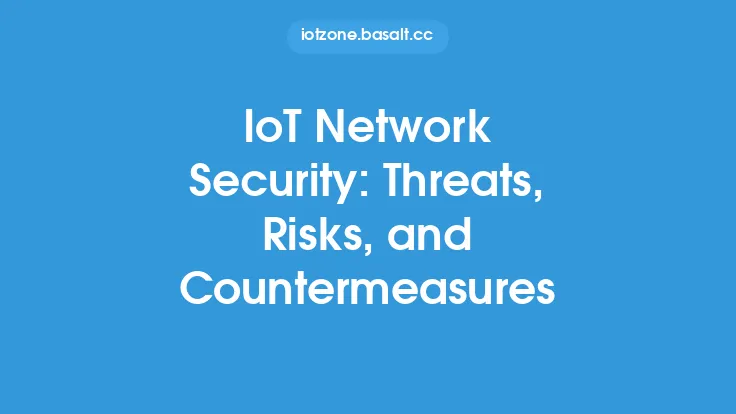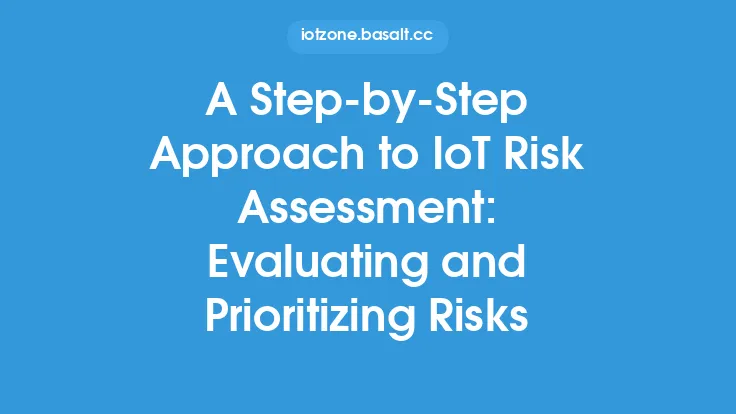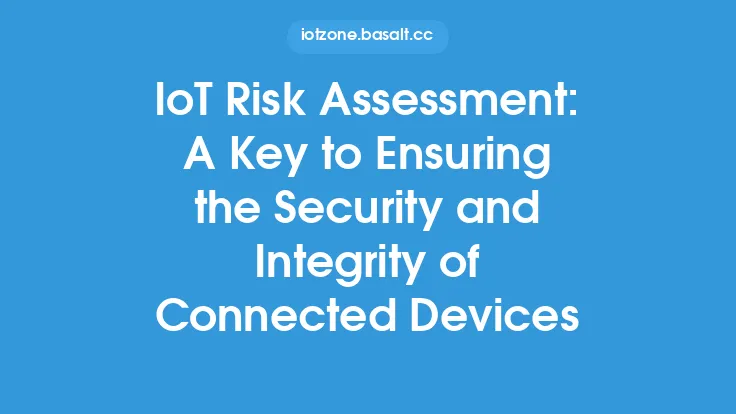The increasing number of devices connected to the internet has led to a significant rise in the potential attack surface for malicious actors. IoT devices, in particular, have become a prime target for hackers due to their often-limited security features and the potential for significant disruption to critical infrastructure. As such, it is essential to understand the various types of IoT network security threats, the risks they pose, and the mitigation strategies that can be employed to protect against them.
Types of IoT Network Security Threats
IoT network security threats can be broadly categorized into several types, including device-based threats, network-based threats, and data-based threats. Device-based threats involve the exploitation of vulnerabilities in IoT devices themselves, such as weak passwords, outdated firmware, or insecure communication protocols. Network-based threats, on the other hand, involve the exploitation of vulnerabilities in the network infrastructure, such as unsecured Wi-Fi networks or poorly configured firewalls. Data-based threats involve the unauthorized access or manipulation of data transmitted or stored by IoT devices, such as sensitive personal data or confidential business information.
Some common examples of IoT network security threats include malware and ransomware attacks, denial-of-service (DoS) and distributed denial-of-service (DDoS) attacks, man-in-the-middle (MitM) attacks, and SQL injection attacks. Malware and ransomware attacks involve the use of malicious software to compromise IoT devices or networks, often with the goal of extorting money from the victim. DoS and DDoS attacks involve overwhelming a network or device with traffic in order to make it unavailable to users. MitM attacks involve intercepting and altering communication between two parties, often in order to steal sensitive information. SQL injection attacks involve injecting malicious code into databases in order to extract or manipulate sensitive data.
Risks Associated with IoT Network Security Threats
The risks associated with IoT network security threats are significant and can have severe consequences for individuals, businesses, and organizations. Some of the most significant risks include financial loss, reputational damage, and compromised personal safety. Financial loss can occur as a result of stolen funds, intellectual property, or other sensitive information. Reputational damage can occur as a result of a security breach, which can lead to a loss of customer trust and confidence. Compromised personal safety can occur as a result of the exploitation of vulnerabilities in IoT devices used in critical infrastructure, such as healthcare or transportation systems.
In addition to these risks, IoT network security threats can also have significant consequences for the environment and public health. For example, a security breach in a smart grid system could lead to a power outage, which could have severe consequences for public health and safety. Similarly, a security breach in a water treatment system could lead to the contamination of drinking water, which could have severe consequences for public health.
Mitigation Strategies for IoT Network Security Threats
There are several mitigation strategies that can be employed to protect against IoT network security threats. One of the most effective strategies is to implement robust security measures, such as encryption, firewalls, and access controls. Encryption involves the use of algorithms to protect data in transit or at rest, making it unreadable to unauthorized parties. Firewalls involve the use of network devices or software to block unauthorized access to a network or device. Access controls involve the use of authentication and authorization mechanisms to ensure that only authorized parties have access to a network or device.
Another effective strategy is to implement regular software updates and patches, which can help to fix vulnerabilities and prevent exploitation by malicious actors. This can include updating firmware, operating systems, and applications, as well as installing security patches and updates. Additionally, it is essential to use strong passwords and authentication mechanisms, such as multi-factor authentication, to prevent unauthorized access to devices and networks.
Technical Mitigation Strategies
From a technical perspective, there are several mitigation strategies that can be employed to protect against IoT network security threats. One of the most effective strategies is to implement a secure communication protocol, such as Transport Layer Security (TLS) or Secure Sockets Layer (SSL). These protocols involve the use of encryption and authentication mechanisms to protect data in transit and ensure that only authorized parties have access to a network or device.
Another effective strategy is to implement a network segmentation architecture, which involves dividing a network into smaller, isolated segments. This can help to prevent the spread of malware and other types of attacks, as well as reduce the attack surface. Additionally, it is essential to implement intrusion detection and prevention systems, which can help to detect and prevent unauthorized access to a network or device.
Best Practices for IoT Network Security
There are several best practices that can be employed to ensure the security of IoT networks. One of the most effective practices is to conduct regular security assessments and risk analyses, which can help to identify vulnerabilities and prioritize mitigation strategies. Another effective practice is to implement a security incident response plan, which can help to quickly respond to and contain security breaches.
Additionally, it is essential to ensure that IoT devices and networks are designed with security in mind, rather than as an afterthought. This can involve implementing secure by design principles, such as secure coding practices and secure communication protocols. It is also essential to ensure that IoT devices and networks are regularly monitored and maintained, which can help to detect and prevent security breaches.
Conclusion
In conclusion, IoT network security threats are a significant concern for individuals, businesses, and organizations. The risks associated with these threats are severe and can have significant consequences for financial loss, reputational damage, and compromised personal safety. However, by implementing robust security measures, such as encryption, firewalls, and access controls, and conducting regular software updates and patches, it is possible to mitigate these risks. Additionally, by implementing technical mitigation strategies, such as secure communication protocols and network segmentation architectures, and following best practices, such as conducting regular security assessments and implementing security incident response plans, it is possible to ensure the security of IoT networks.





